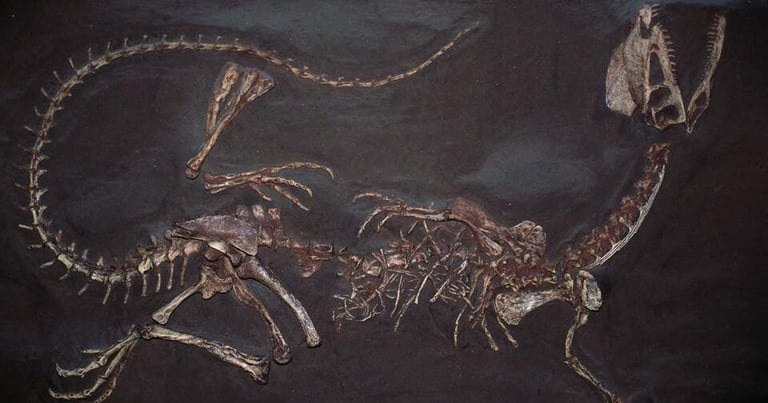China Unveils 120-Million-Year-Old Two-Headed Reptile Fossil, Unveiling Ancient Developmental Anomalies
August 25, 2025
Scientists in China have discovered a nearly 120-million-year-old fossil of a two-headed Hyphalosaurus, a semi-aquatic reptile from the Early Cretaceous period, providing rare evidence of ancient developmental abnormalities.
This fossil reveals an axial bifurcation, a developmental disorder resulting from failed embryonic twinning, demonstrating that such anomalies have existed for over 100 million years and highlight the deep evolutionary roots of these conditions.
The specimen was found in the Yixian Formation on an unbroken slab of stone, confirming that the deformity was natural and not caused by tampering or damage.
Given its small size and incomplete bone development, scientists believe the two-headed Hyphalosaurus likely died shortly after birth or before hatching.
Hyphalosaurus, also known as Sinohydrosaurus, was a small, semi-aquatic reptile with an elongated neck and paddle-like limbs, living in freshwater lakes across China during the Cretaceous period, and is often mistaken for a dinosaur.
Fossils of Hyphalosaurus, which lived around 170 million years ago across Asia, Europe, and North America, have revealed detailed skin, scale structures, and webbed feet, aiding scientists in understanding its morphology and ecology.
The discovery of this fossil, measuring only 70 millimeters, makes it the oldest known example of a two-headed animal, likely representing an embryo or newborn, and shows no signs of forgery or damage.
The axial bifurcation observed in the fossil indicates a malformation where the embryo began to split into twins but did not fully separate, resulting in two skulls and necks on a single body.
This find pushes back the timeline for polycephaly in vertebrates, suggesting that the mechanisms for such developmental anomalies have been present for a much longer period in evolutionary history than previously thought.
Summary based on 2 sources
Get a daily email with more Science stories
Sources

The Daily Galaxy - Great Discoveries Channel • Aug 19, 2025
20 Years Later, , the World’s Oldest "Two-Headed " Dinosaur Was Discovered—And It Still Defies Logic